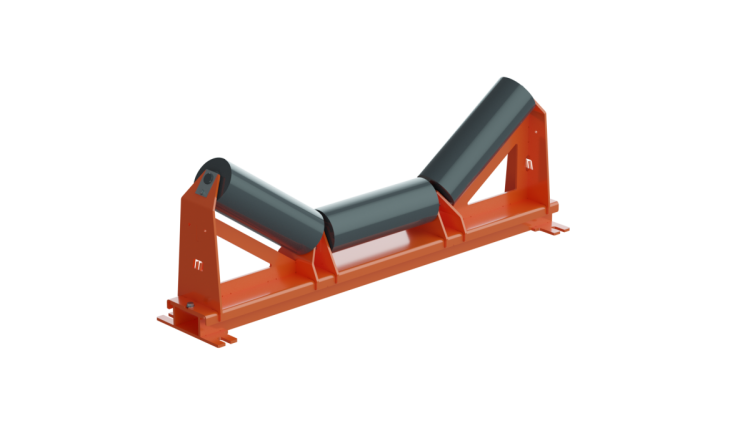Trac-Mount™ Idler
Martin® Trac-Mount™ Idlers utilize sliding frames on a stationary base to provide an idler set that will fit in tight spaces between belt support cradles and allows easy installation and service. Trac-Mount™ Idlers are available with standard or wide base frames and utilize impact or steel rolls in CEMA class C, D or E.
Features and Benefits:
- Slide-in frames need only eight inches (203 mm) of width for 6-inch (152 mm) rolls
- Slide-out/slide-in roller frames allows idler service without need to raise belt or remove adjacent idlers
- Trac-Mount™ Idlers provide proper belt carriage while they stabilize the belt line to improve sealing
- Assemblies are supplied with steel or impact rolls from Precision Pulley and Idler
Custom Engineering
Martin Engineering can custom-design Martin® Trac-Mount™ Idlers to meet unique application requirements. Options include steel construction, frames with adjustable angle, rolls from alternative suppliers or other special needs. Our technicians and engineers are available to provide expert advice and assistance on this product and all of your bulk material handling questions and problems. Please contact us today and let us help!
